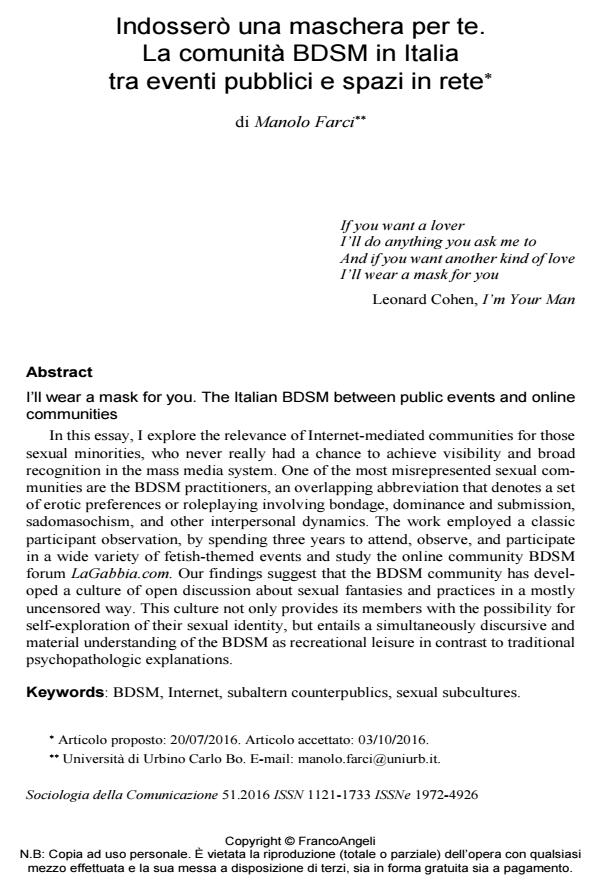I’ll wear a mask for you. The Italian BDSM between public events and online communities
Journal title SOCIOLOGIA DELLA COMUNICAZIONE
Author/s Manolo Farci
Publishing Year 2016 Issue 2016/51
Language Italian Pages 20 P. 100-119 File size 228 KB
DOI 10.3280/SC2016-051007
DOI is like a bar code for intellectual property: to have more infomation
click here
Below, you can see the article first page
If you want to buy this article in PDF format, you can do it, following the instructions to buy download credits

FrancoAngeli is member of Publishers International Linking Association, Inc (PILA), a not-for-profit association which run the CrossRef service enabling links to and from online scholarly content.
In this essay, I explore the relevance of Internet-mediated communities for those sexual minorities, who never really had a chance to achieve visibility and broad recognition in the mass media system. One of the most misrepresented sexual communities are the BDSM practitioners, an overlapping abbreviation that denotes a set of erotic preferences or roleplaying involving bondage, dominance and submission, sadomasochism, and other interpersonal dynamics. The work employed a classic participant observation, by spending three years to attend, observe, and participate in a wide variety of fetish-themed events and study the online community BDSM forum LaGabbia.com. Our findings suggest that the BDSM community has developed a culture of open discussion about sexual fantasies and practices in a mostly uncensored way. This culture not only provides its members with the possibility for self-exploration of their sexual identity, but entails a simultaneously discursive and material understanding of the BDSM as recreational leisure in contrast to traditional psychopathologic explanations.
Keywords: BDSM, Internet, subaltern counterpublics, sexual subcultures.
Manolo Farci, Indosserò una maschera per te. La comunità BDSM in Italia tra eventi pubblici e spazi in rete in "SOCIOLOGIA DELLA COMUNICAZIONE " 51/2016, pp 100-119, DOI: 10.3280/SC2016-051007